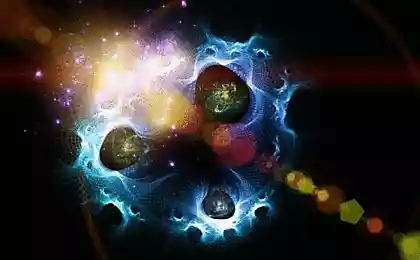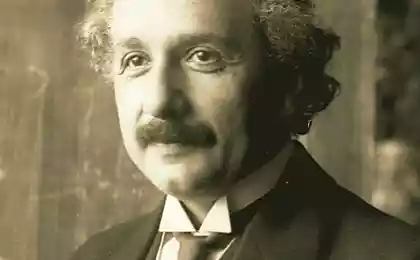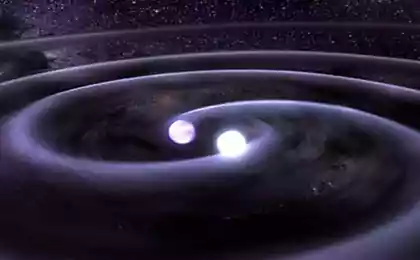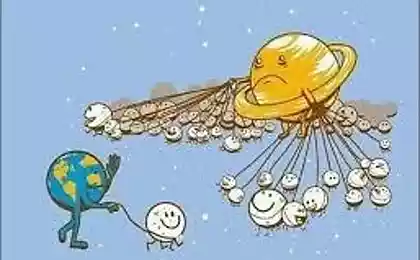756
What else don't we know about time travel

What is the time? Augustine of Hippo said, "I know what time is until you think about it." According to the standard model of physics, time is the fourth dimension, in addition to the three spatial dimensions. So, through it you can take. For many years science fiction writers have relished the possibility of time travel in various details. Every year we develop more and more new technologies, discovering new aspects of science. We have to learn about time travel, before we begin to translate them into reality?
You probably noticed that we always move in time. We move through it. At a basic level, the concept of time is the rate of change of the Universe, and regardless of whether we like it or not, we are undergoing constant change. Age, the planets move around the Sun, things are destroyed.
We measure the passage of time seconds, minutes, hours and years, but this does not mean that time flows at a constant speed. As the water in the river, time goes differently in different places. In short, time is relative.
But what causes the time fluctuations on the path from cradle to grave? It all comes down to the relationship between time and space. Man is able to perceive in three dimensions — length, width, and depth. The time complements this party as the most important fourth dimension. Time does not exist without space, space does not exist outside of time. And this couple is connected in the space-time continuum. Any event occurring in the Universe must involve space and time.
In this article we consider the most real and daily possibility of traveling through time in our Universe, as well as less accessible, but no less possible path through the fourth dimension.
Time travel to the future

If you want to live a couple of years a little faster than someone else, you need to cope with space-time. Global navigation satellites do it every day, overtaking the natural course of time to three billionths of a second. In orbit time goes faster because the satellites are far away from the mass of the Earth. And on the surface of the mass of the planet drags the time and slows it down in a relatively small scale.
This effect is called gravitational time dilation. According to the General theory of relativity, gravity bends space-time and astronomers use this consequence, when studying the light passing near massive objects.
But what does this have to do with time? Remember — every event in the Universe involves both the space and time. Gravity pulls not only space but also time.
Being in the flow of time, you'll hardly notice the change. But a sufficiently massive objects like the supermassive black hole Sagittarius alpha, located in the center of our galaxy, will seriously distort the fabric of time. The mass of its singularity points — 4 million suns. This mass slows down time twice. Five years in orbit of a black hole (without falling in it) is ten years on Earth.
Speed of movement also plays an important role in the speed of flow of our time. The closer you get to maximum speed — the speed of light, the slower time flows. The clock in the fast-moving train to the end of the journey will begin "late" one billionth of a second. If the train reaches a speed of 99.999% of the light in one year in the carriage can be transported on two hundred and twenty-three years in the future.
In fact, this idea of a constructed hypothetical travel to the future in the future, sorry for the tautology. But what about the past? Can I turn back time?
Time travel to the past

We found that the journey into the future happens all the time. Scientists have shown this experimentally, and this idea lies at the basis of the theory of relativity, which this year celebrates 100 years. In the future it is possible to move, the question remains only "how quickly"? As for the time travel to the past, to answer this question we have to look at the night sky.
The milky Way galaxy with a width of about 100 000 light years, so light from distant stars you have to overcome thousands and thousands of years before it reaches Earth. Catch this light, and, in fact, you just look past. When astronomers measure the cosmic microwave radiation, they look in that space as it was 10 billion years ago. But that's not all.
In Einstein's relativity theory there is nothing that would preclude the possibility of travel into the past, but the possible existence of a button that would take you back to yesterday violates the law of causality, or cause and effect. In the Universe when something happens, the event creates a new infinite chain of events. The reason is always born before the effect. Just imagine a world where the victim would be dead before the bullet hit her in the head. It is a violation of reality, but, despite this, many scientists do not exclude the possibility of time travel to the past.
For example, suppose that the motion faster than the speed of light could send back in time. If time slows down as the object approaches the speed of light, the overcoming of this barrier will turn back the clock? Of course, when approaching the speed of light increases and the relativistic mass of an object, that is, approaching infinity. To accelerate infinite mass is impossible. Theoretically, warp speed is warp speed, as such, can fool the universal law, but even that will require enormous amount of energy.
What if time travel into the future and the past depend not only on our basic knowledge of space, and more on existing cosmic phenomena? Let's look at a black hole.
Black holes and Kerr rings
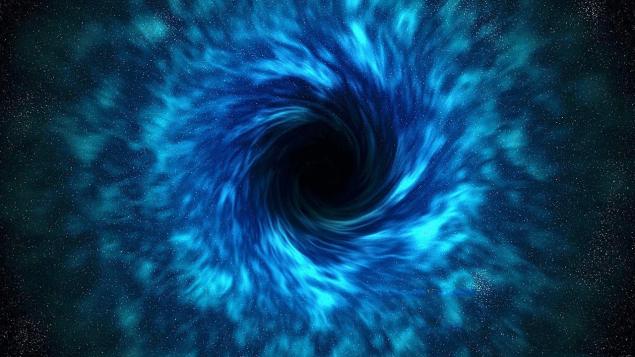
Wander around the black hole long enough, and gravitational time dilation will throw you into the future. But what if you were to fall directly into the mouth of the cosmic monster? About what will happen when diving into a black hole, we have already mentioned, but did not mention such exotic variety of black holes, as the ring of Kerr. Or Kerr black hole.
In 1963 the new Zealand mathematician Roy Kerr proposed the first realistic theory for a rotating black hole. The concept includes neutron stars — massive collapsing star the size of Saint Petersburg, for example, but with the mass of earth's Sun. Neutron holes, we have included in the list of most mysterious objects in the Universe, calling them magnetosome. Kerr suggested that if a dying star collapses into a rotating ring of neutron stars, their centrifugal force will not allow them to turn into a singularity. And since the black hole has no singularity points, Kerr considered that it is possible to get inside, without fear to be torn apart by gravity in the center.
If Kerr black holes exist, we could go through them and come out the white hole. It's like the exhaust pipe of a black hole. Instead of trying to suck in everything, the white hole, by contrast, throw away everything you can. Perhaps even in another time or another Universe.
Kerr black holes remain a theory, but if they do exist they are kind of portals offering one-sided journey to the future or the past. And though extremely advanced civilization would develop in such a way and to move in time, nobody knows when the "wild" Kerr black hole will disappear.
Wormholes (wormholes)
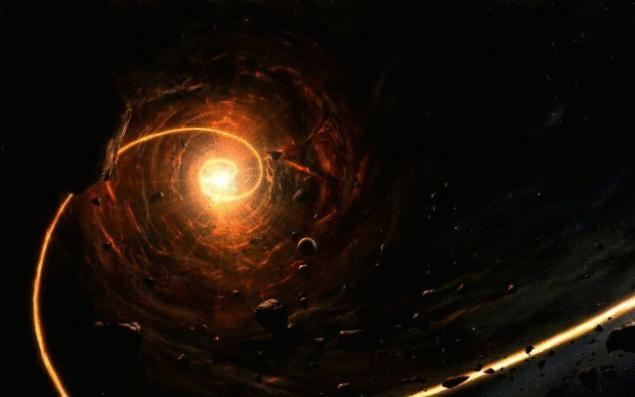
Theoretical Kerr ring are not the only way a possible "shorter" paths to the past or future. In science fiction movies, from "Star trek" to "Donnie Darko" is often considered a theoretical bridge Einstein — Rosen. These bridges are known as wormholes.
The General theory of relativity allows for the existence of wormholes, because the basis of the theory of the great physicist is the curvature of space-time under the influence of mass. To understand this curvature, imagine the fabric of space-time in the form of a white sheet and fold in half. The area of the sheet remains the same, he is not deformed, but the distance between the two points of contact will clearly be smaller than when the sheet is lying on a flat surface.
In this simplified example, space is depicted as a two-dimensional plane, not four-dimensional, which really is (remember the fourth dimension — time). Are similar to the hypothetical wormholes.
Fast forward into space. The concentration of mass in two different parts of the Universe could create a kind of tunnel in space-time. In theory, this tunnel would connect the segment two different space-time continuum between them. Of course, it is possible that some physical or quantum properties do not allow a wormhole to emerge on their own. Well, or they are born and then die, being unstable.
According to Stephen Hawking, wormholes may exist in quantum foam — the smallest environment in the Universe. Tiny tunnels constantly are born and torn, linking separate places and time for short moments.
Wormholes can be too small and short to move the person, but suddenly one day we will be able to find them, to keep, to stabilize and increase? Provided, as noted by Hocking that you'll be ready to feedback. If we want to artificially stabilize the tunnel of space-time, radiation from our actions can destroy it as the reverse of sound can damage your speaker.
Cosmic strings

We are trying to squeeze through black holes and wormholes, but maybe there is another method of time travel using a theoretical space phenomenon? With these thoughts we turn to the physics of John. Richard Gatto, which introduced the idea of cosmic string back in 1991. As the name implies, this is a hypothetical object that could have formed in the early stages of development of the Universe.
The strings pervade the whole Universe, being thinner than a atom and under strong pressure. Of course, this implies that they give a gravitational pull to everything that passes near them, and thus the objects attached to a cosmic string can travel through time with incredible speed. If you pull two cosmic strings close to each other or put one of them near a black hole, you can create what's called a closed time-like curve.
Using the gravity produced by the two cosmic strings (or the string and black hole), a spaceship theoretically could send himself into the past. To do this would be to make a loop around the cosmic strings.
Incidentally, the quantum strings are now very hotly debated. Gott said that to travel back in time you need to make a loop around the string that contains half the mass-energy of an entire galaxy. In other words, half of the atoms in the galaxy would have had to use as fuel for your time machine. Well, as everyone knows, you cannot go back in time before the creation of the machine itself.
In addition, there are temporal paradoxes.
The paradoxes of time travel

As we have said, the idea of traveling into the past slightly overshadowed by the second part of the law of causality. The reason comes before the result, at least in our Universe, and therefore can ruin even the best-laid plans of time travel.
For starters, imagine: if you go back 200 years, you appear before his birth. Think about that for a second. For some time the result (you) would exist before the cause (your birth).
To better understand what we're dealing with, consider the famous grandfather paradox. You — killer, who travels back in time your goal is your own grandfather. You pass through the nearest wormhole and come to live 18 years to the father of your father. You raise the gun, but what happens when you press the trigger?
Think. You were not born yet. Even your father was not yet born. If you kill the grandfather, he will have no son. This son never give birth to you, and you will not be able to go back in time, completing the bloody task. And your absence will not trigger, thus negating the entire chain of events. We call it the loop of incompatible reasons.
On the other hand, we can consider the idea of a consistent causal loop. She, though thought-provoking, theoretically eliminates the time paradox. According to physicist Paul Davies, such a loop as follows: Professor of mathematics goes into the future and kidnaps a complex mathematical theorem. After that produces her most brilliant student. After that promising student grows and learns, to one day become a man who one day the Professor stole the theorem.
In addition, there is another model of time travel, which involves distorted probability when approaching the possibility of a paradoxical event. What does it mean? Let's go back to the skin of the murderers of your grandfather. This model of time travel can kill your grandfather virtually. You can pull the trigger, but the gun won't work. The bird chirp at the right time or will something else: quantum fluctuation will not give a paradoxical situation take place.
And finally, the most interesting. The future or the past, in which you'll go simply cannot exist in a parallel Universe. Imagine this as the paradox of separation. You can destroy anything you want, but your home world is not affected. You kill the grandfather, but will not disappear — will disappear, perhaps another "you" in a parallel world, well, or the script goes according to the considered schemes of the paradox. However, it is possible that such time travel would be disposable and you will never be able to return home.
Very confused? Welcome to the world of time travel. published
Source: hi-news.ru



